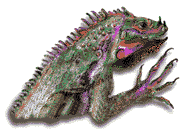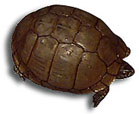Testking 70-659 exam product, exam 70-622 dumps, and exam mb7-839 exam questions are 100% complete. Your certification is just a matter of time if you prepare with our exam mb7-840 dumps and exam 642-467 dumps.
by Norman A. Rubin
Reptiles vary in size. Some are carnivorous and others are vegetarians. Some are dangerous and others are harmless. Yet the traits of reptiles and their habits have been utilized in the creativity and mythology of humans.
As the witches of Macbeth stirred the magical potion in the large kettle, superstitions, symbols and myths on reptiles had already been stirring for ages. The various myths reveal the association of certain sacred reptiles with the supernatural and with so-called magical powers. These themes are encountered among civilizations millennia in the past to our own present culture.
Take the snake and serpents, for example:
There is no creature more widely found in the mythologies of the world than snakes. Mythical legends frequently occur in lands where there are no snakes - such as with the Eskimos who live in the ice bound Arctic. Saint Patrick may have driven the reptile out of Ireland, but his efforts could not cleanse the country of snake legends.
The Bible does not narrate favorably about the reptile; the "Good Book" compared everything evil to the venomous snake.
God cursed the snake "above every beast of the field" and commanded that "upon your belly you shall crawl, and dust you shall eat all the days of your life." (Gen 3:14)
..."and deprived the reptile of its feet after tempting Eve in the Garden of Eden..."
Israel's neighbors associated the serpent (snake) with an Earth Mother and played and the snake played a beneficial role in fertility cults. In Israel, a bronze snake, dated from the 15th Century BCE has been found at Gezer, demonstrating that the ancient Canaanites worshipped snakes. An iron serpent from the Israelite period was found by archaeologists in the Ayalon Valley, suggesting another snake cult.
In ancient Egypt, RE was primary among the god-head and was identified by the snake. The Pharoes are frequently represented with this snake on their crown. For a long time the Egyptian cobra, Naja Haje, has been the stock-and-trade for the conjurer and side-show snake charmers. Cobras are well known for their ability to expand their upper neck into a disc shape by spreading its ribs. The cobra, then, symbolized immortality and was regarded as a protected deity, being frequently illustrated on ancient Egyptian monuments.
In Christian lore, the good snake is seen in iconography as rising from the chalice of Saint John. The serpent is depicted as wound around a cross and is sometimes portrayed with the icon of a woman's head to symbolize lust and temptation. The snake at the foot of the cross is evil, and in that position symbolizes the triumph over evil and the removal of the powers of "darkness."
Snake worship is still widespread in Asia and Africa. In India the reptile is considered by Hindu myth to be semi-divine with serpent bodies reverently called "Nagas." Today, in America, there is new evidence of snake worship in the Kentucky and Tennessee hill country - adding to the collection of known sites throughout the North American continent.
An interesting observation is that, as pointed out by naturalists, several species of snake, including young cobras, will play dead when threatened. Other species can be temporarily paralyzed by pinching the snake on the neck or merely turning it on its back. There is the story of Aaron's rod that turned into a serpent and swallowed the serpents of the Pharoe's sorcerers... Many snakes and crocodiles are cannibalistic and, if sufficiently hungry, will eat their own species. Thus, if Aaron's rod were actually a paralyzed snake or crocodile this phenomenon could have some possibility.
Chameleons are widely regarded with unreasoning fear, especially in West Africa, where various beliefs associate the reptile with the Sun. In Dahomey, the chameleons are said to fetch fire from the Sun. In early Christianity, the chameleon was used to symbolize Satan who, like the chameleon, could change his appearance to deceive mankind. Other deep-rooted belief that persist are that chameleons are "nourished by the air," and hence do not eat. They do have huge lung sacks that, when fully expanded, become almost transparent. Nevertheless, chameleons do eat food.
The eyes of the chameleon are unique. The lids are fused over each eye ball, leaving only a small aperture, and each eye can see and move independently. Seen close-up, this random movement can be quite un-nerving. A belief arose as far back as the time of Pliny (1st Century AD) that a chameleon talisman restored sight to the blind.
Best known for its ability to change its skin color to blend with its background, the chameleon has been referred in Sufi (Pantheistic Muslim mysticism) parables relating to an inconsistent person. "So as the chameleon changes his skin, an unwise one changes the color of his being..." The thought is still believed among modern men.
The Lizard:
The behavioral pattern of the lizard has inspired various beliefs, myths and legends associated with the Sun. In Egypt, it is said that in spring the lizards will climb an eastward facing wall and look to the east. When the Sun rises, the lizard's sight and the sight of some blinded person, will is returned. Lizards have been associated with extreme heat in the Near East and in Australia, the aboriginal believed that the sky would fall if you killed one.
In ancient Egypt and Greek symbolism the lizard represented divine wisdom and good fortune. This was especially true of the reverence for Serapes and Hermes. In Roman mythology, lizards supposedly sleep through the winter and so symbolize both death and resurrection. Early Christianity associated the lizard with the devil and with evil. While on the Pacific islands of Polynesia and Maoris lizards are revered as a "heaven god."
Turtles and Tortoises:
The turtle in ancient Egypt was synonymous for draught, the enemy of the Sun god, while a pair of tortoise would be depicted with a scale, representing the ebb and flow of the Nile's floodwaters. The tortoise was a fertility symbol in Greek and Roman times, and an attribute of Aphrodite/Venus who supposedly ascended from the sea.
Crocodiles
As we near the end of this list of reptiles in mythology and symbolism we cannot omit the crocodile , considered to be one of the most base, malignant, treacherous and evil-hearted vertebrates.
The crocodile was, to the people on the ancient Near East, a familiar character in many of their common texts. In Egypt the reptile was equated with the crocodile-headed "Sebek" who symbolized viscous passions, deceit, treachery and hypocrisy.
"Double, double, toil and trouble, fire burn and cauldron bubble - fillet of fennel, snake, toad, adder's fork, lizard's leg..."
Their venom is cruel and can kill you. (Deut 32:33).
 The Bible further writes about the snake that corrupt judges are "like the poison of a serpent," (Psalms 58:4-5). People whose words offend are said to have "tongues full of deadly poison," (James 3:8) and so on and on it goes. In the New Testament sinners are regarded as a "generation of vipers," (Matt 3:7, 12:34, 23:33, Luke 3:7). Even today there are many traces of myths that result from ignorance and the deep-rooted fear of snakes. It is believed that "Their tongues are like a serpent. Adder's poison is under their lips," (Ps. 140:3). Many well educated people in many areas around the world still regard the tongue of a snake to be poisonous, disregarding the fact that the poison is injected through hollow fangs in specific varieties of snakes.
The Bible further writes about the snake that corrupt judges are "like the poison of a serpent," (Psalms 58:4-5). People whose words offend are said to have "tongues full of deadly poison," (James 3:8) and so on and on it goes. In the New Testament sinners are regarded as a "generation of vipers," (Matt 3:7, 12:34, 23:33, Luke 3:7). Even today there are many traces of myths that result from ignorance and the deep-rooted fear of snakes. It is believed that "Their tongues are like a serpent. Adder's poison is under their lips," (Ps. 140:3). Many well educated people in many areas around the world still regard the tongue of a snake to be poisonous, disregarding the fact that the poison is injected through hollow fangs in specific varieties of snakes. Chameleons are another story:
Chameleons are another story:
Editor's note: Our favorite move is the black and white "Night of the Iguana" in which the symbolism of "freeing the lizard" is used as the main theme. Also, at www.iguana.images.com you can see the first live "iguana cam."  The turtle in classic mythology was revered for its longevity and chided for its slowness and lubricity. The tortoise was frequently depicted as supporting the entire world at the beginning of creation. The tortoise has appeared frequently in association with water, the Moon and Earth Mother, time, immortality, etc. People in ancient China believed these reptiles to have oracle powers.
The turtle in classic mythology was revered for its longevity and chided for its slowness and lubricity. The tortoise was frequently depicted as supporting the entire world at the beginning of creation. The tortoise has appeared frequently in association with water, the Moon and Earth Mother, time, immortality, etc. People in ancient China believed these reptiles to have oracle powers.

In various districts in the Land of Egypt the crocodile was venerated as a symbol of sunrise and the rising waters of the Nile.
It was written that, "Having swallowed the moon (i.e. conquered the night)... he wept (causing the waters to rise)," ... hence our common reference to someone shedding "crocodile tears."At Thebes, a young crocodile was reared in the temple and decorated with jewels of all kinds. At Ombi, the crocodile was worshipped and its mummified remains have been found in numerous surrounding catacombs.
According to Pliny, the people of Rome revered the crocodile for its silence and stealth. They believed the reptile was tongueless. The Greeks saw in the crocodile the dual nature of man, represented by the reptile's ability to live in both water and on land. In ancient Israel, the populace bestowed the name "Taninim" (Leviathan), the sea monster on the crocodile. They were reminded of the reference in Genesis (Gen 1-2) in which, "God then created the great sea monster..." The first Christians called the crocodile "the devourer" and believed that being swallowed by a crocodile was a sure guarantee of a quick descent into hell. In the colony of Zanzibar, in Africa, being bitten by a crocodile requires that the crocodile be made to appear in court to face charges (anyone up to that job?).
We have tasted the "witches brew" and can now hopefully see the myriad of myths and superstitions that spread throughout time and geography. It's a curious stigma that is attached to all reptiles.
And afterwards! May the legends and symbols of the men of old be lessons to ye people of our time. So that a man may see those things which befell others besides himself. Then he will honor and consider carefully the words and legends of past peoples." --The Book of 1000 Nights and One Night.Norman A. Rubin is a contributing writer from Afula, Israel.
|
If you enjoyed this article on reptiles, you may enjoy the following ViewZone archived stories:
|